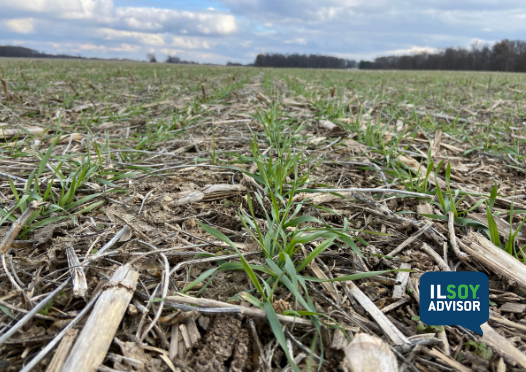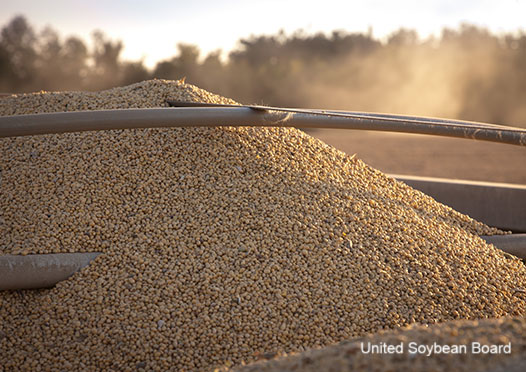ILSOYADVISOR POST
Why You May Need Balance GT Beans
Why will the Balance™ GT Soybean Performance System be important to the soybean industry and weed management?
There are current certainties in weed management. First, there are no new novel herbicide modes of action coming to market anytime soon for corn and soybeans. And second, weed control is getting harder every year due to weed resistance. The past couple of years there has been a lot of press on LibertyLink®, Roundup Ready® Xtend and Enlist™ beans and while these are new traits, the herbicide modes of action (glufosinate, 2,4-D and dicamba) have been around for decades and date back to some of the earliest herbicides marketed.
Balance GT Soybeans are the first technology to offer a new herbicide site of action for pre-emergence weed control, the Group 27 HPPD site of action. Earlier herbicide-resistant traits in soybeans, such as LibertyLink, Roundup Ready, Roundup Ready 2 Yield and Roundup Ready 2 Xtend added additional opportunities for post-emergence weed control. Balance GT Soybeans provides another herbicide SOA for pre-emergence weed control in soybeans, which can expand your options for controlling resistant weeds.
Today growers have access to four pre-emerge/residual herbicide SOAs for residual control of waterhemp and other broadleaf weeds in soybeans. Each group has strengths and weaknesses.
- Group 3 DNA herbicides. Examples would include Sonalan®, Treflan® and Prowl®.
- Strengths - Good activity on waterhemp and other amaranthus species.
- Weakness – Incorporation required. This chemistry is considered fairly water insoluble, which means it takes quite a bit of rain to activate. This is especially true of Prowl.
- Group 5 PS II Inhibitors. Example: metribuzin.
- Strengths - Better on large seeded broadleaves like velvetleaf, giant ragweed and cocklebur than the other 3 sites of action listed here. Also, good activity on waterhemp and has synergistic activity with Group 27 HPPD chemistry. (Just like atrazine does)
- Weakness - Length of residual is based on rate and most products that contain metribuzin only contain a low rate. You can also experience crop response issues if metribuzin on the soil surface is splashing up on soybean leaves by raindrops.
- Group 14 PPO. Examples Valor® XLT, Authority® brands and Sharpen®. Other products that contain Valor, Authority or Sharpen would include Sonic®, Envive®, Enlite®, Fierce®, Fierce XLT, Gangster®, Broadaxe®, Spartan® Charge and Optill® Pro.
- Strengths - Good control of waterhemp if it isn’t PPO resistant. (In 2016, 244 out of 378 fields tested for waterhemp herbicide resistance had PPO resistant waterhemp - that is 64.5 percent). For more information on PPO resistant waterhemp testing in Illinois, go to: http://bulletin.ipm.illinois.edu/?p=3821
- Weakness - Crop injury in certain weather conditions as well as weak control of grass species.
- Group 15 Mitosis Inhibitor-containing products include Boundary®, Broadaxe, Authority Elite, Prefix® and Outlook® amongst others.
- Strengths - Good residual on small-seeded broadleaves and grass species.
- Weakness – Weak residual control of large-seeded broadleaf weeds. Products in this group also vary significantly in water solubility, meaning you could experience varying levels of weed control depending on the water solubility of the product you chose and the weather conditions of that year.
What will Balance GT bring to the table that these others don’t? Balance GT soybean is the first herbicide trait that allows using Group 27 HPPD herbicides on soybeans. This will give another effective SOA in soybeans and the first product on the market will be Balance Bean herbicide. However, it is still pending regulatory approval in the U.S. Bayer won’t recommend Balance Bean herbicide alone but tank-mixed with herbicides from the four sites of action listed above. There are six reasons for using Balance GT group 27 HPPD SOA in soybean weed management:
- Provides better large seeded broadleaf weed control than the Group 3 DNA’s or Group 15 Mitosis Inhibitors. It also provides longer residual for waterhemp than current rates of metribuzin that is contained in the current herbicide offerings on the market.
- Has a much lower use rate and much easier to work with than the Group 3 DNA herbicides. It can be incorporated, but is not required to be incorporated like some of the Group 3 DNA products.
- While there is some isolated resistance in waterhemp to the Group 27 HPPD class of herbicides, to slow development of resistance it will be a good tool to use in combination with ”multiple herbicide sites of action.” to these herbicide sites of action.
- Balance GT soybeans are bred with resistance to this herbicide SOA and crop safety exceeds that of the Group 14 PPO herbicide as well as the Group 5 PS II Inhibitor herbicides while providing similar, if not longer residual control of waterhemp. Remember, germinating waterhemp only has one growing point to control vs. many growing points after they have emerged, so control is easier.
- Provides better control of many grass species than Group 14 PPO herbicides.
- Provides chemistry that is both water soluble and water insoluble, so it is not as sensitive to the amount of precipitation required for optimum performance as other Group 15 Mitosis Inhibitors.
With tough weeds like waterhemp, growers need to use multiple herbicide sites of action. Having another tool will be important for controlling waterhemp now and in the future.





Comments
Add new comment